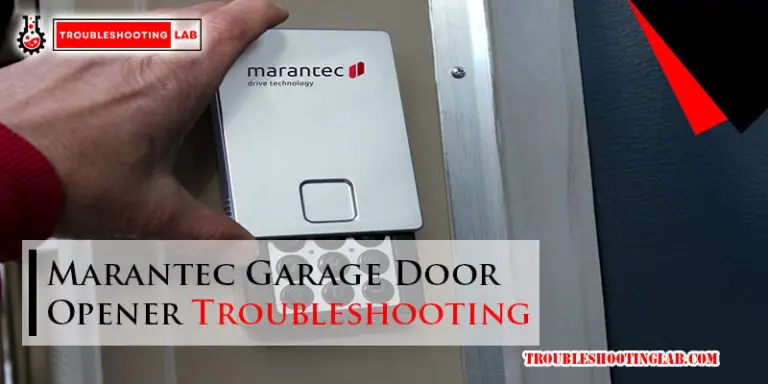Wabco Trailer ABS Troubleshooting Manual: Quick Fixes!
The Wabco Trailer ABS Troubleshooting Manual provides step-by-step guidance for resolving ABS issues. It covers diagnostic procedures, error codes, and repair instructions.Navigating the complexities of trailer ABS systems can be daunting, but a comprehensive manual simplifies the process. With clear instructions and detailed diagrams, the manual is an essential tool for mechanics. It helps ensure that trailers remain safe and compliant with transportation regulations.
Understanding the manual’s guidance ensures quick identification and resolution of potential ABS problems, minimizing downtime and maintaining road safety.
Introduction To Wabco Trailer Abs
Wabco Trailer ABS ensures safety on the roads. This system plays a crucial role in heavy-duty transportation. It prevents wheel lockup during braking. This leads to better control and reduced stopping distances. Understanding how this system works is vital for maintaining trailer safety.
The Importance Of Abs In Trailers
ABS, or Anti-lock Braking System, is a lifesaver in trailers. It keeps wheels from locking during sudden stops. This helps maintain steering control. It also stops trailers from skidding. This results in safer driving conditions for all road users.
- Prevents wheel lockup
- Maintains control during emergencies
- Reduces risks of skidding and accidents
Wabco’s Role In Trailer Safety
Wabco leads in commercial vehicle safety. Their ABS technology is top-notch for trailers. They design systems that adapt to different driving conditions. This helps drivers manage their trailers effectively. Wabco’s dedication to innovation keeps roads safer.
| Feature | Benefit |
|---|---|
| Advanced ABS technology | Enhances trailer control |
| Adaptive systems | Responds to various conditions |
| Continuous innovation | Improves road safety |
Common Abs Fault Symptoms
Let’s talk about common ABS fault symptoms in trailers. This guide helps you spot problems early.
Warning Light Indicators
Your trailer’s ABS light is a key alert. If it’s on, there’s a problem.
- Steady Light: Shows a minor fault.
- Blinking Light: Means a more serious issue.
Always check the manual for what lights mean. It’s your first step in troubleshooting.
Braking Performance Issues
Problems with braking? Here’s what might be wrong:
- Longer Stopping Distances: ABS isn’t working right.
- Brake Locking: ABS might be off or faulty.
- Uneven Braking: Could be a sensor problem.
These signs need quick action to keep your trailer safe.
Initial Assessment Steps
When your trailer’s ABS light flashes, it’s time for a check-up. Starting with the right steps ensures a safe and accurate diagnosis. Let’s dive into the initial assessment for your Wabco Trailer ABS.
Safety Precautions
Before diving into troubleshooting, safety comes first. Always work in a well-ventilated area. Wear protective gear like gloves and safety glasses. Ensure the trailer is stable and wheels are chocked. Disconnect the battery to prevent electrical shocks.
Tools Needed For Diagnosis
Proper tools make the job easier. You’ll need a diagnostic scanner compatible with Wabco systems. A multimeter checks electrical connections. Keep a set of wrenches and screwdrivers handy. A flashlight helps you see in dark areas. Gather these tools before you start.
- Diagnostic scanner – for reading ABS codes
- Multimeter – to test circuits
- Wrenches and screwdrivers – for removing parts
- Flashlight – to illuminate work areas
With safety in mind and tools at hand, you’re set for a successful diagnosis. Remember, accurate troubleshooting saves time and keeps your trailer running smoothly.
Reading The Fault Codes
Mastering your Wabco Trailer ABS is crucial for safety. It starts with reading fault codes. These codes tell you what’s wrong. Let’s learn how to read them.
Using Onboard Diagnostics
Your Wabco ABS has a built-in diagnostic system. It helps you find issues fast. Follow these steps to use it:
- Turn on the ignition but don’t start the engine.
- Look for the ABS light on the dashboard.
- Count how long the light stays on.
- Note any pattern changes in the light.
This system saves time. It points to the problem quickly.
Interpreting Blink Codes
Blink codes are like ABS Morse code. They tell you what’s wrong. Here’s how to read them:
| Number of Blinks | Fault |
|---|---|
| 2 Blinks | Low Voltage |
| 4 Blinks | Sensor Issue |
| 6 Blinks | Communication Error |
Count the blinks and match them to the table. Now you know what to fix!
Quick Fixes For Common Issues
Dealing with Wabco Trailer ABS issues can be tricky. But, we’ve got you covered! Here are quick fixes for common problems. These steps are easy to follow. You don’t need to be a pro to do them.
Resetting The Abs System
Resetting your ABS system is like giving it a fresh start. Follow these simple steps:
- Turn off your trailer’s ignition.
- Wait for about 30 seconds.
- Turn the ignition back on.
This process often fixes minor glitches. It’s like rebooting your computer!
Simple Sensor Repairs
Sensors play a huge role in your ABS. They need care too. Here’s how to keep them happy:
- Check for dirt or damage. Clean or replace if needed.
- Ensure the sensor is properly connected.
- Test the sensor with a diagnostic tool.
Most sensor issues are simple to fix. They just need a little attention.
Remember: Regular maintenance prevents big problems. These fixes can save you time and money. Keep your trailer running smoothly with these tips.
Sensor-related Problems And Solutions
Truckers know the importance of a functional ABS in trailers. Sensor problems can cause ABS malfunctions. Proper troubleshooting is key. This section explores common sensor issues and solutions.
Cleaning Wheel Speed Sensors
Brake system safety relies on clean wheel speed sensors. Dirt and debris affect sensor readings. Follow these steps for effective cleaning:
- Turn off the trailer and ensure safety.
- Locate the wheel speed sensors on each wheel.
- Remove any visible debris gently.
- Use a sensor-approved cleaner to wipe surfaces.
- Re-install sensors and test the ABS system.
Sensor Replacement Procedure
When sensors fail, replacement is necessary. Perform these steps for sensor replacement:
- Disconnect the trailer’s power supply.
- Remove the faulty sensor from the wheel hub.
- Compare the new sensor with the old one.
- Install the new sensor securely in place.
- Reconnect power and test for proper operation.
| Step | Action | Result |
|---|---|---|
| 1 | Remove old sensor | Prepares for new sensor |
| 2 | Install new sensor | Ensures accurate readings |
| 3 | Test ABS system | Confirms successful installation |
Valve And Modulator Troubleshooting
Trailer safety is crucial on the road. A well-functioning ABS (Anti-lock Braking System) is key. The ABS ensures stability during braking. But, problems can arise. Valve and modulator issues are common. They can lead to brake failure or poor performance.
Testing Valve Operation
Regular valve checks are essential for safe trailer operation. To test valve operation:
- Locate the valve on the ABS unit.
- Use a diagnostic tool to activate the valve.
- Listen for a click, indicating proper function.
- Check air pressure output with a gauge.
If the valve fails to operate, it may need cleaning or replacement.
Replacing Faulty Modulators
Modulators control air flow to brakes. They are critical for ABS function. To replace a faulty modulator:
- Turn off the trailer air supply.
- Remove the modulator from the valve assembly.
- Install a new modulator securely.
- Reconnect air lines and electrical connections.
- Test the system to ensure proper installation.
Always use manufacturer-approved modulators for best results.
Electrical System Checks
Proper maintenance of a trailer’s ABS is crucial for safety. The electrical system is a common area for issues. Regular checks ensure the system functions correctly. Here’s how to troubleshoot the electrical components.
Inspecting Wiring Harnesses
Wiring harnesses are the nervous system of the ABS. They require careful examination. Look for signs of wear, corrosion, or damage.
- Check connections for tightness and cleanliness.
- Inspect for frayed wires or exposed conductors.
- Use a multimeter to test for continuity.
- Ensure proper routing to avoid pinching or chafing.
Solving Power Supply Problems
Power issues can disable an ABS system. A systematic approach can identify and fix these problems.
- Verify battery health and charge level.
- Check fuses and relays for proper operation.
- Ensure the ABS ECU has a solid ground connection.
- Look for voltage drops that indicate bad connections.
Addressing power supply problems early prevents system failure. Regular checks keep your trailer’s ABS in top shape.
Advanced Troubleshooting Techniques
Advanced troubleshooting techniques for Wabco Trailer ABS can save time and money. These methods pinpoint issues quickly. Mechanics and technicians use them daily.
Utilizing Advanced Diagnostic Tools
High-tech tools are a must for modern ABS issues. They provide accurate readings. Mechanics rely on them to find problems fast. Here’s how to use them:
- Connect the tool to the ABS module.
- Follow on-screen instructions.
- Record the error codes displayed.
- Consult the manual for code details.
Tools often have software updates. Always use the latest version.
Deciphering Complex Fault Codes
Fault codes can be confusing. Each one points to a specific problem. Here’s a simple method to understand them:
- Locate the fault code in the manual.
- Read the description carefully.
- Check the related components.
- Perform the recommended tests.
Fault codes guide you to the issue. Always double-check your findings.
Maintaining Your Abs For Longevity
Maintaining your ABS (Anti-lock Braking System) is crucial for your trailer’s long-lasting performance. A well-maintained ABS ensures safety and reduces the risk of costly repairs. This section focuses on how to keep your ABS in top condition for years.
Regular Maintenance Schedule
Following a regular maintenance schedule is key to ABS longevity. Here are steps to include:
- Check ABS sensors for dirt and damage every month.
- Inspect wiring connections for corrosion or looseness bi-monthly.
- Test the ABS functionality quarterly by a professional.
- Replace worn parts as recommended by the Wabco manual.
Preventive Measures For Common Faults
To prevent common ABS faults, take these measures:
- Keep the sensor area clean from debris and dirt.
- Ensure all electrical connections are tight and corrosion-free.
- Avoid high-pressure washing directly on sensors and cables.
- Follow the Wabco troubleshooting manual for specific issues.
Regular checks and preventive steps can save time and money. They keep your trailer’s ABS running smoothly. This care helps avoid sudden failures on the road.
When To Seek Professional Help
Troubleshooting a Wabco Trailer ABS system can be complex. Even with a detailed manual, some issues need expert attention. Recognizing when to call in a professional is crucial. This ensures safety and prevents further damage.
Limitations Of Quick Fixes
Quick fixes may seem convenient, but they often offer temporary relief. They can mask underlying issues. This leads to potential risks on the road. Key signs that quick fixes won’t cut it include:
- Recurring errors: ABS lights that keep turning on.
- Complex codes: Fault codes that are hard to decipher.
- Performance issues: Braking irregularities despite resets.
Finding Qualified Technicians
Locating a skilled technician is essential for proper repairs. They have the right tools and knowledge. Look for these qualifications:
| Certification | Experience | Reviews |
|---|---|---|
| ASE certification or equivalent. | Years working with ABS systems. | Positive feedback from other truck owners. |
Start with a local search for ABS specialists. Check their credentials. Read customer testimonials. This ensures your trailer’s ABS system gets the best care.

Frequently Asked Questions
What Is Wabco Abs On Trailers?
Wabco ABS refers to an Anti-lock Braking System specifically designed for trailers by Wabco, enhancing safety by preventing wheel lockup during braking.
How To Diagnose Wabco Trailer Abs Issues?
Diagnose Wabco trailer ABS issues by checking the ABS indicator light, using a diagnostic tool to read fault codes, and inspecting sensors and wiring for damage.
Can I Reset Wabco Abs Myself?
Yes, you can reset Wabco ABS by following the manufacturer’s reset procedure, which typically involves cycling the ignition and checking for error code clearance.
What Are Common Wabco Abs Fault Codes?
Common Wabco ABS fault codes include sensor malfunctions, loss of communication with the ECU, and issues with the modulator valves.
Why Is My Wabco Abs Light On?
Your Wabco ABS light is on due to detected malfunctions such as sensor issues, wiring problems, or an active fault code in the ABS system.
Conclusion
Navigating through the complexities of Wabco trailer ABS issues just got easier. With the insights and step-by-step guidance from our troubleshooting manual, you’re now equipped to tackle common problems efficiently. Remember, maintaining your trailer’s ABS system is crucial for safety and performance.
Keep this manual handy for quick reference and ensure your journeys remain smooth and secure.






